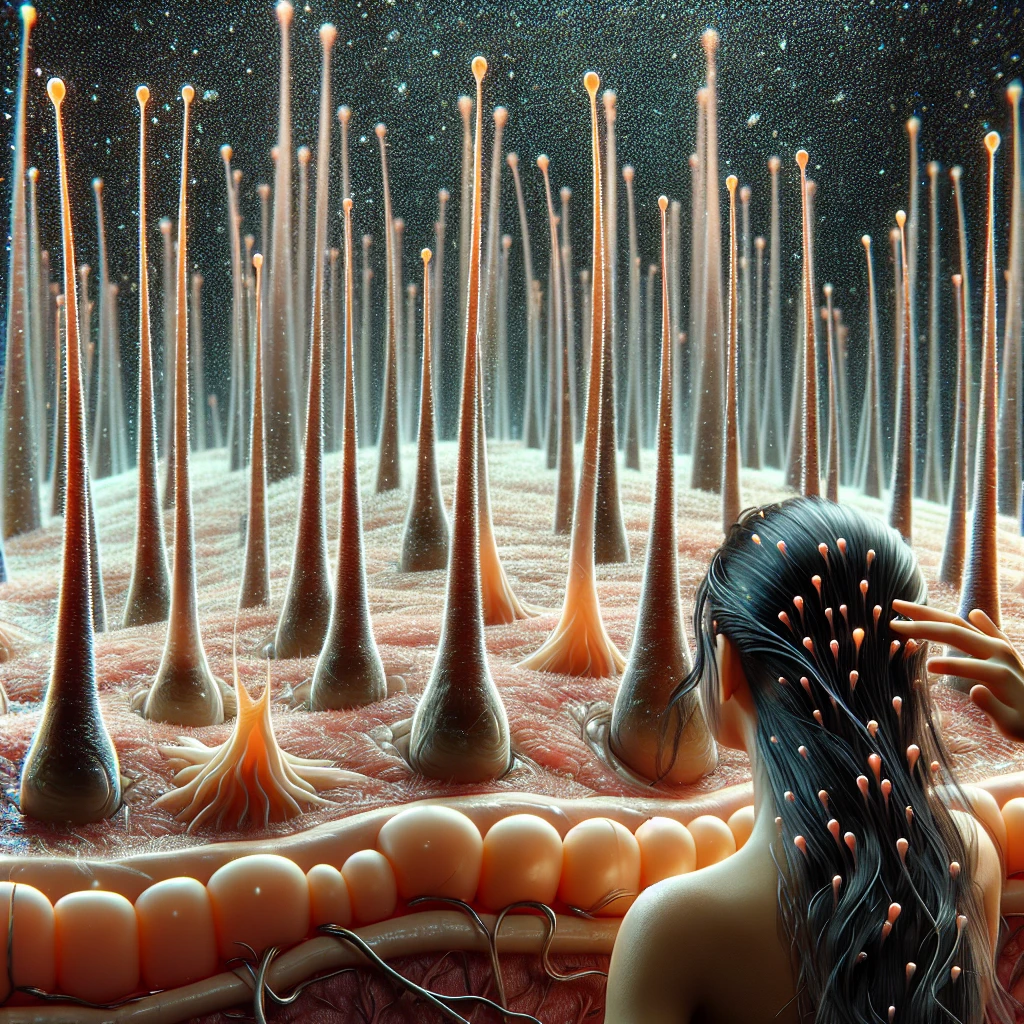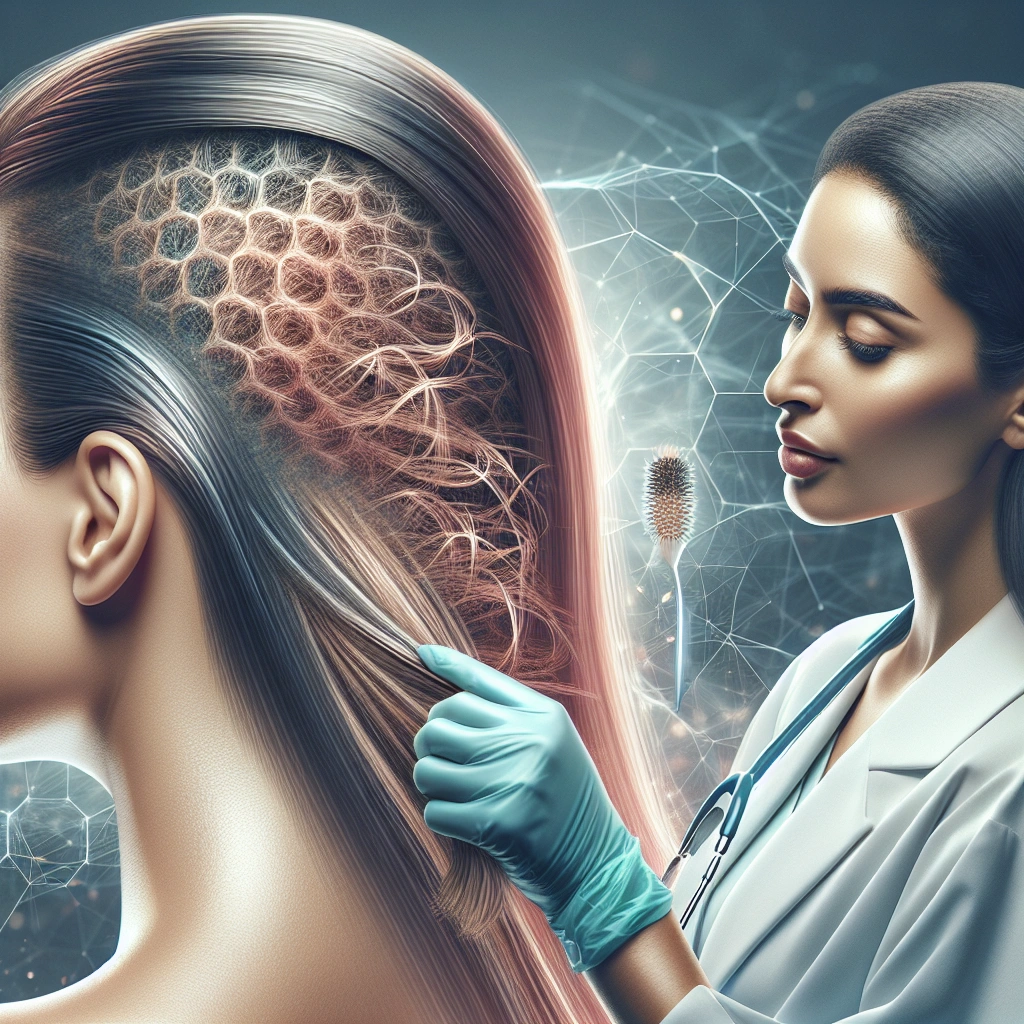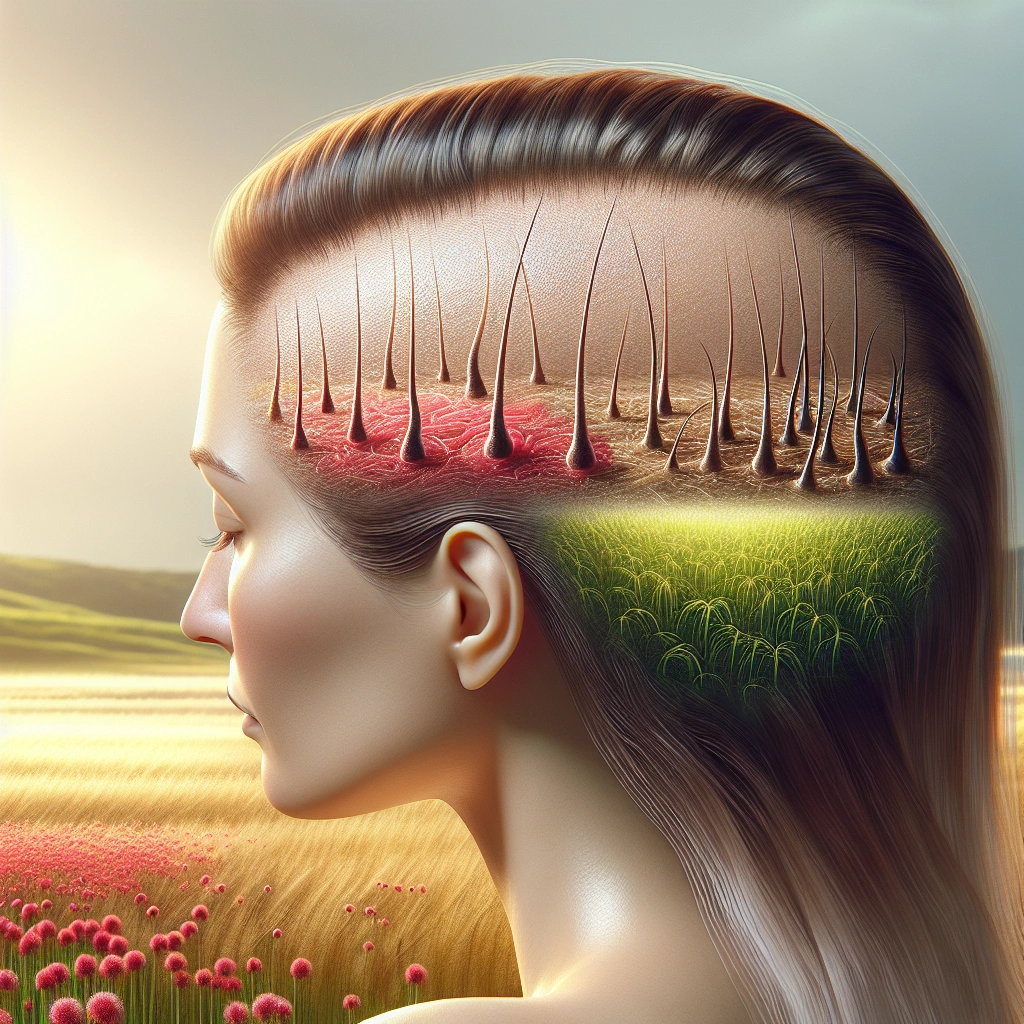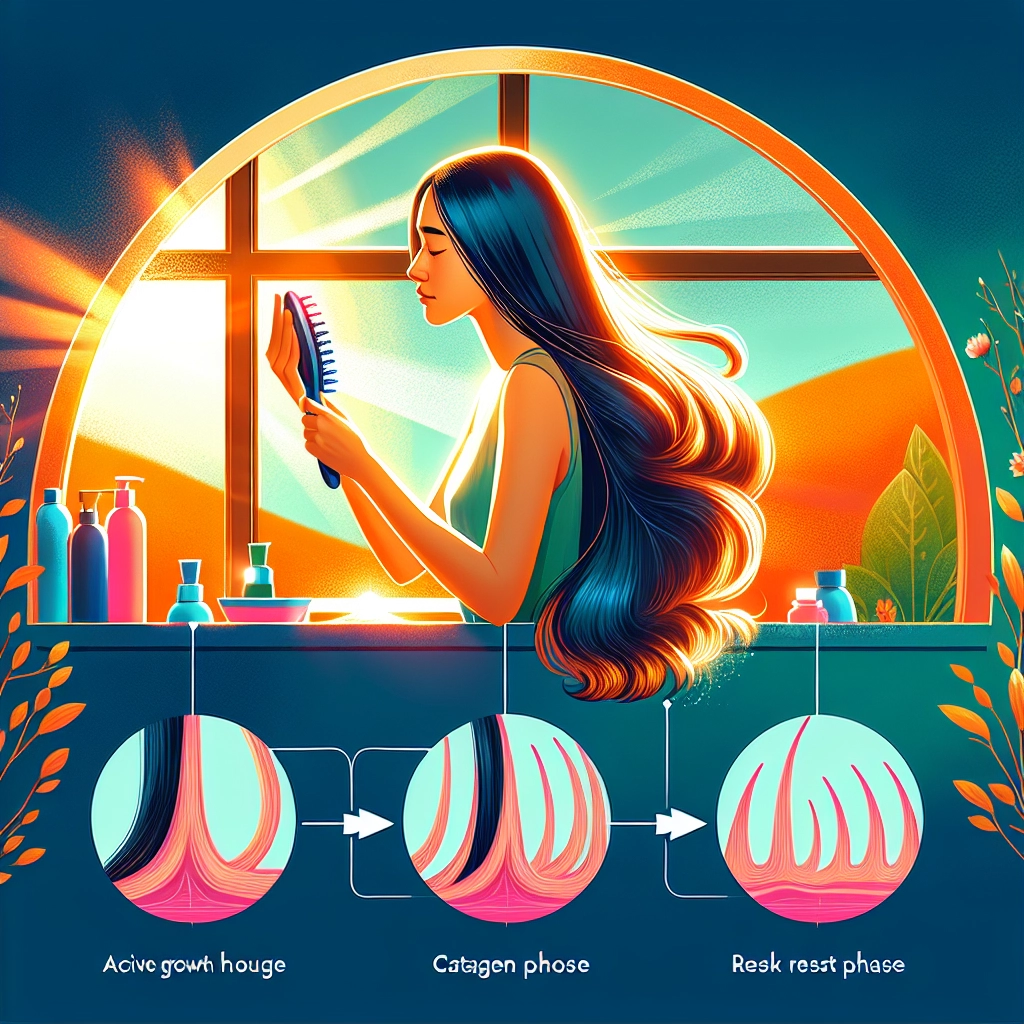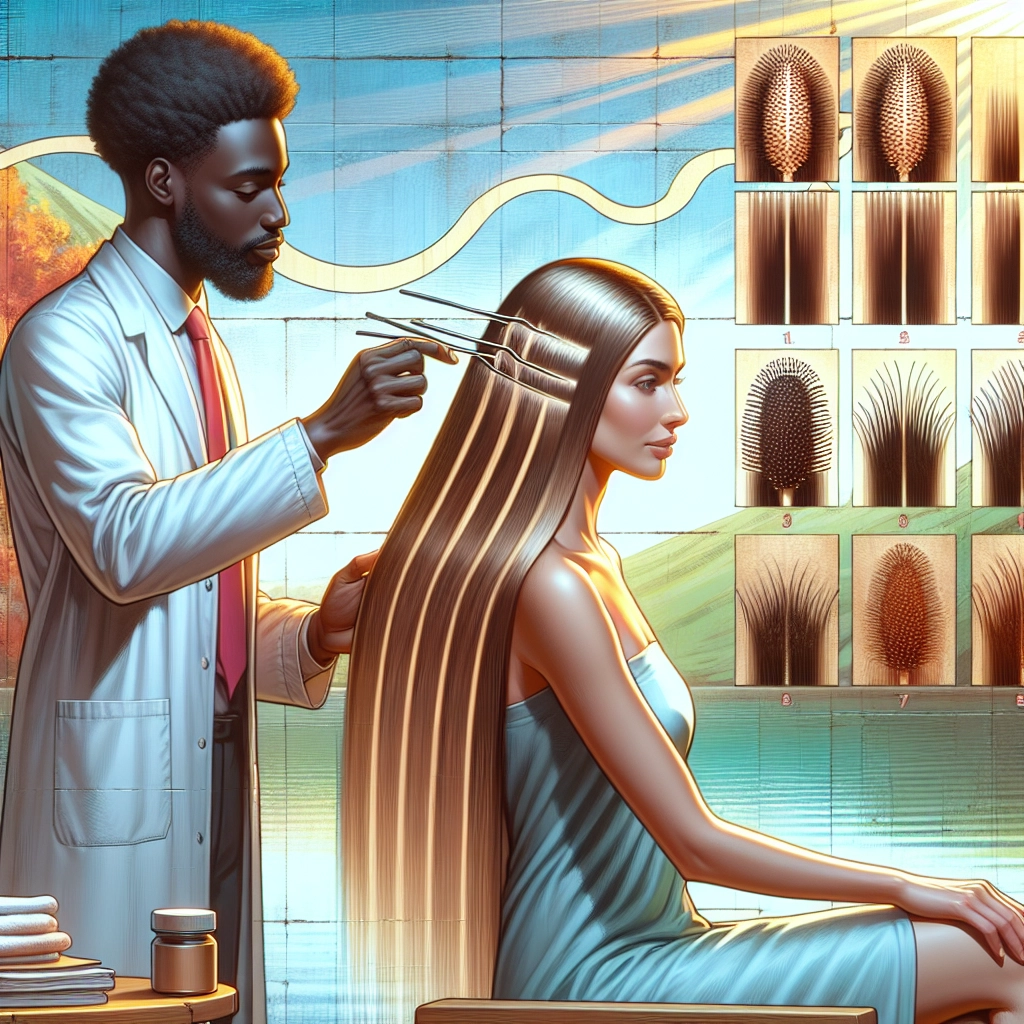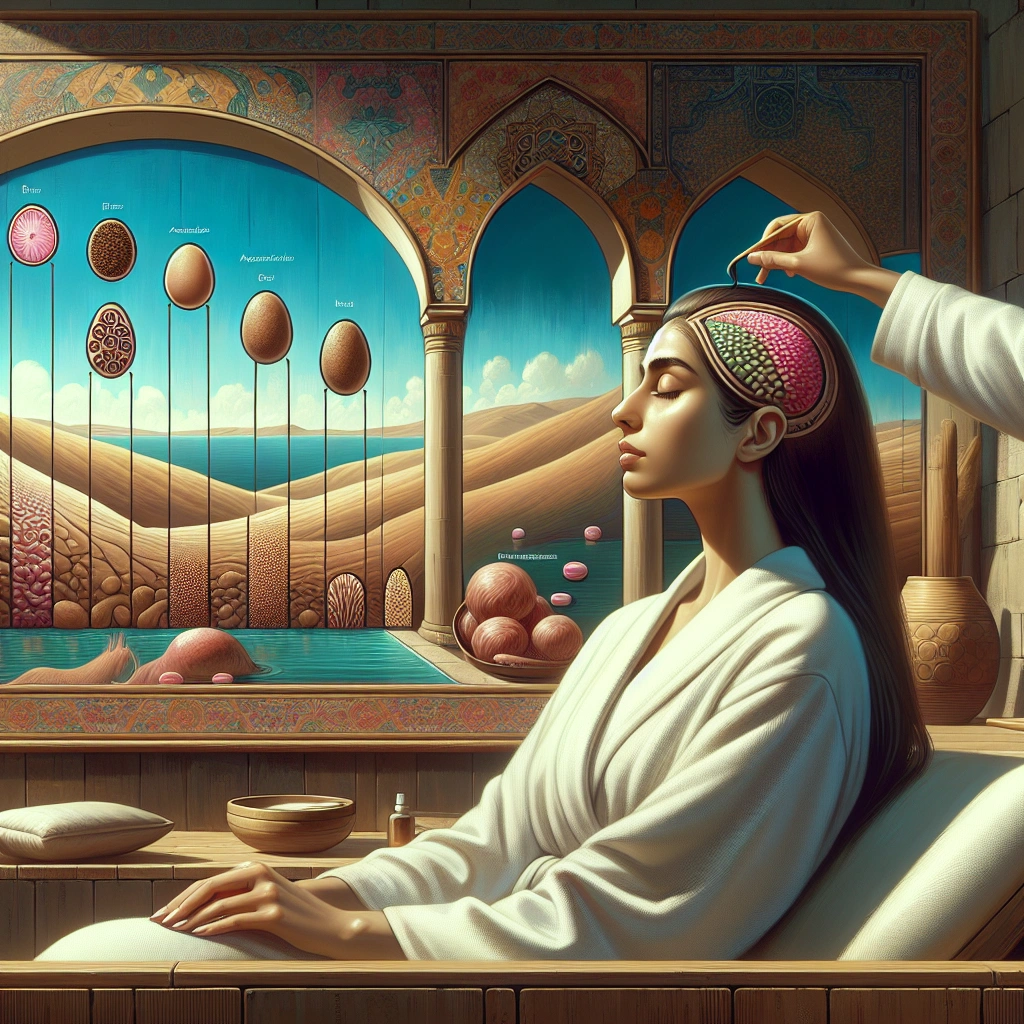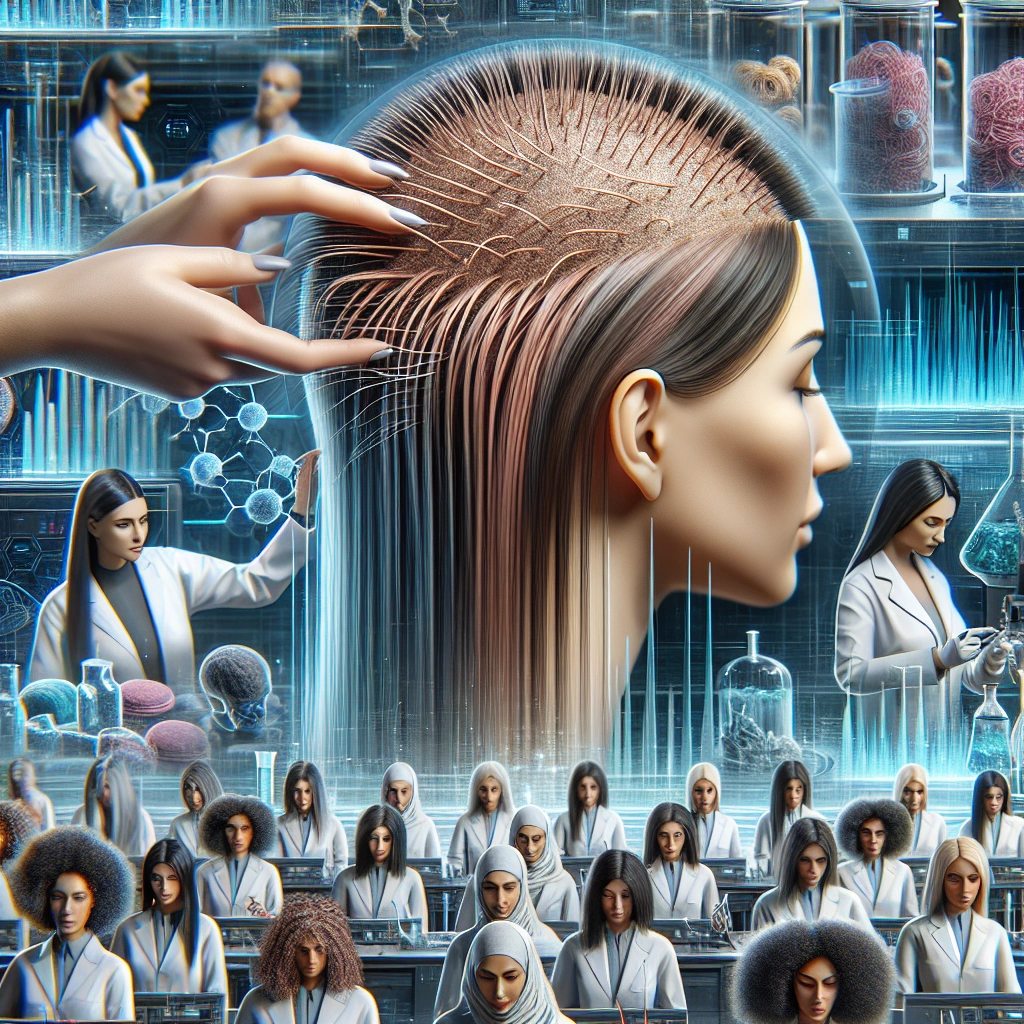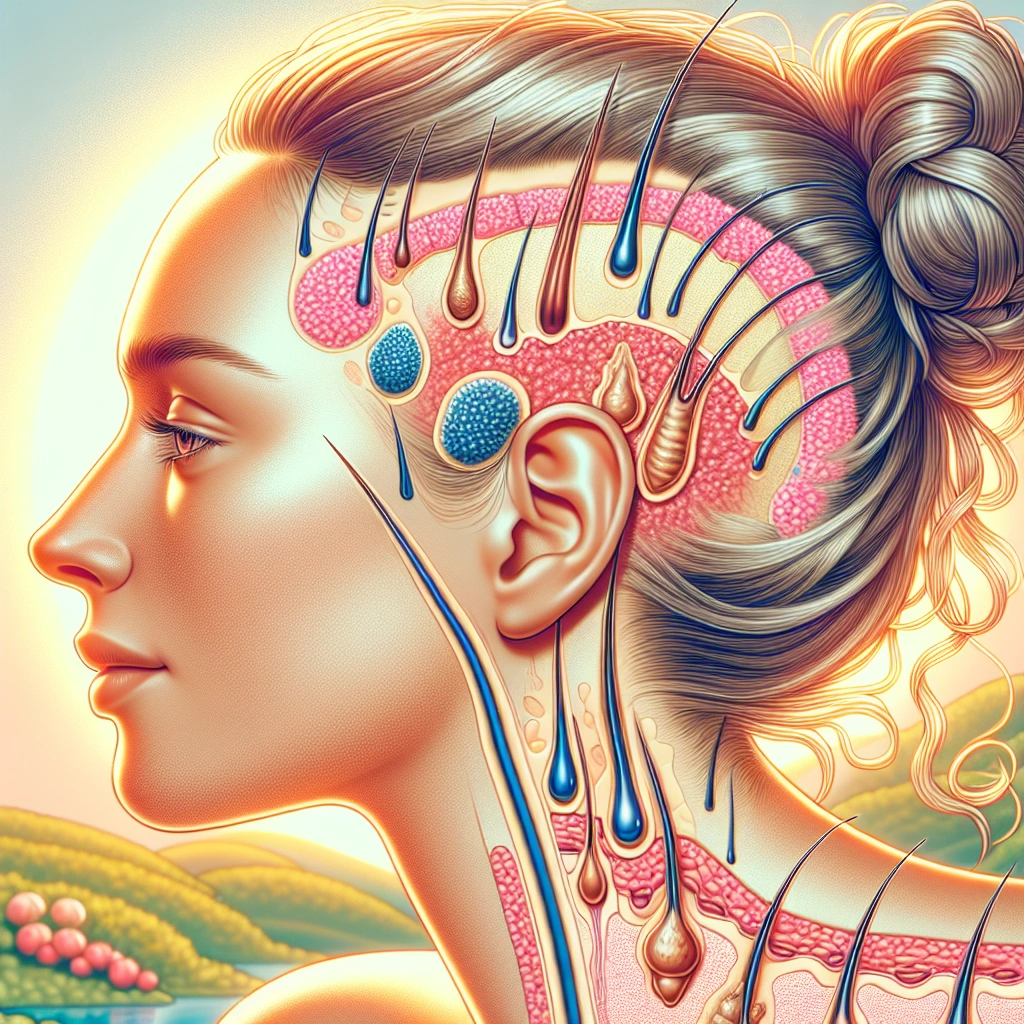

Understanding the hair growth cycle in females is important for maintaining healthy hair and addressing any issues related to hair loss. The stages of the hair growth cycle in females include anagen (growth), catagen (transition), telogen (rest), and exogen (shedding).
Each stage plays a crucial role in the overall health and appearance of female hair, making it essential to have a good understanding of the cycle.
Check out this Youtube video: “Hair Cycle and Hair Growth Factors – YouTube” to learn about the stages of the hair growth cycle in females.
Understanding the Hair Growth Cycle
Definition of the hair growth cycle
The hair growth cycle refers to the process through which hair undergoes continuous growth, transition, and shedding. It consists of four distinct stages, namely anagen, catagen, telogen, and exogen.
Explanation of the differences in the hair growth cycle between males and females
The key difference in the hair growth cycle between males and females lies in the duration of the anagen phase. For men, this phase typically lasts 2-4 years, while for women, it spans a longer period of 3-6 years.
This variance contributes to differences in hair length and fullness between the genders. Additionally, studies have also shown that hair growth rates differ based on hair thickness, with thinner hairs growing slower than thicker ones.
| Hair Growth Cycle Stage | Duration in Males | Duration in Females |
|---|---|---|
| Anagen (Growth) | 2-4 years | 3-6 years |
| Catagen (Transition) | 7-21 days | 7-21 days |
| Telogen (Rest) | 3-4 months | 3-4 months |
| Exogen (Shedding) | 2-3 months | 2-3 months |
Anagen Phase
Description of the anagen phase in the hair growth cycle
The anagen phase is the active growth phase of the hair growth cycle, during which the hair follicles are pushing out hairs that will continue to grow until they’re cut or reach the end of their lifespan and fall out.
Details on the duration and characteristics of the anagen phase in females
In females, the anagen phase can last anywhere from 3 to 7 years. This phase is crucial as it determines the ultimate length of the hair, with an average growth of about half an inch per month.
However, it’s interesting to note that hair grows faster in the summer than in winter, contributing to variations in growth rates throughout the year.
Catagen Phase
Explanation of the catagen phase in the hair growth cycle
In the hair growth cycle, the catagen phase marks the transition from active hair growth to a resting state. During this phase, the hair follicle undergoes apoptosis-driven regression, leading to a decrease in follicle size.
This phase typically lasts for approximately 7-21 days, during which the hair becomes detached from its blood supply and is pushed out of the follicle by the new hair.
Differences in the catagen phase between males and females
In terms of the catagen phase, there aren’t significant differences between males and females. Both genders experience a similar duration and characteristics associated with this phase.
However, individual variations may occur due to genetic, environmental, or hormonal factors.
| Catagen Phase | Male | Female |
|---|---|---|
| Duration | 7-21 days | 7-21 days |
| Characteristics | Apoptosis-driven regression | Apoptosis-driven regression |
| Variations | Genetic, environmental, hormonal factors | Genetic, environmental, hormonal factors |
Telogen Phase
Description of the telogen phase in the hair growth cycle
The telogen phase is the resting phase of the hair growth cycle where the hair follicle remains dormant. During this phase, hair growth stops and the hair is no longer actively growing.
This phase lasts for approximately 3 months or 100 days, and about 10-15% of the hairs are in this phase at any given time.
Discussion on the shedding of hair during the telogen phase in females
In the telogen phase, the shedding of hair occurs as the dormant hairs are pushed into the resting state due to various factors like stress, pregnancy, illness, or trauma. This can lead to rapid hair loss known as telogen effluvium.
Usually, this shedding is temporary, and the hair can grow back within 3 to 6 months. However, if the underlying stress or condition persists, the shedding may become chronic.
Exogen Phase
Explanation of the exogen phase in the hair growth cycle
The exogen phase, also known as the shedding phase, is the final stage of the hair growth cycle in females. During this phase, hair is naturally shed from the scalp, often facilitated by activities such as washing and brushing.
It is normal to lose between 50 to 100 hairs per day during the exogen phase. This phase typically lasts for about 2 to 5 months and occurs concurrently with the growth of new hairs in the follicles as the old ones fall away.
Details on the factors that can affect the exogen phase in females
Several factors can influence the exogen phase of the hair growth cycle in females. These factors may include age, nutrition, overall health, and hormonal influences.
Each of these variables can impact the timeline of the exogen phase. Factors such as chronic stress and hormonal imbalances can also disrupt the natural progression of the hair growth cycle, leading to increased shedding during the exogen phase.
| Factors Affecting Exogen Phase |
|---|
| Age |
| Nutrition |
| Overall Health |
| Hormonal Influences |
| Chronic Stress |
Factors Affecting the Hair Growth Cycle in Females
Discussing hormonal influences on the hair growth cycle
Females, listen, hormonal influences play a big league role in the hair growth cycle. Estrogens, the MVPs of female hormones, put the brakes on hair growth, making it last longer in what’s called the anagen phase.
On the flip side, those pesky androgens, also known as male hormones, speed up the hair cycle, throwing everything off-kilter. It’s like a tug of war happening right on your scalp!
Impact of age and genetics on the hair growth cycle in females
Ladies, age and genetics – they’re like the coaches of your hair growth cycle. As we clock more seasons in the game of life, the anagen phase starts to shrink, while the telogen phase stretches its legs longer.
Translation? Your hair grows slower, like it’s taking a leisurely stroll in the park.
And don’t forget your genetic playbook, which holds all the cards for how your hair’s going to play out. It’s like having your own unique game plan, but for your hair!
Hair Growth Cycle Disorders in Females
Explanation of common disorders related to the hair growth cycle
Hair growth cycle disorders in females refer to conditions that disrupt the normal phases of hair growth and result in hair loss. These disorders can include alopecia areata, trichotillomania, and traction alopecia, each with unique features that aid in diagnosis.
Alopecia areata, for example, is an autoimmune condition where the body’s immune system attacks healthy hair follicles, leading to hair loss in small, round patches.
Details on conditions such as alopecia that can affect the hair growth cycle in females
Alopecia areata specifically causes hair loss in small, round patches and can affect adults and children. On the other hand, androgenetic alopecia is the most common cause of hair loss in women.
Additionally, other conditions such as telogen effluvium, cicatricial alopecia, pregnancy, thyroid disorders, and anemia can also contribute to hair loss in women.
| Disorder | Description |
|---|---|
| Alopecia Areata | Autoimmune condition leading to hair loss in small, round patches |
| Androgenetic Alopecia | Most common cause of hair loss in women |
| Telogen Effluvium | Condition where stress or hormonal changes cause large numbers of hair follicles to enter the resting phase, leading to hair shedding |
| Cicatricial Alopecia | Condition where inflammation destroys hair follicles and replaces them with scar tissue |
| Pregnancy | Hormonal changes during pregnancy can lead to temporary hair loss |
| Thyroid Disorders | Imbalance in thyroid hormones can result in hair thinning and loss |
| Anemia | Iron deficiency anemia can contribute to hair loss and poor hair quality |
Tips for Maintaining Healthy Hair Growth
Supporting the different stages of the hair growth cycle is crucial for maintaining healthy hair. To ensure optimal growth, it’s essential to provide nourishment and care during each stage.
Focus on a balanced diet rich in proteins, vitamins, and minerals to support hair growth at every phase.
When it comes to hair care products and treatments suitable for females, look for options that address specific needs during different growth stages. For instance, products enriched with biotin and keratin can promote healthy growth during the anagen phase, while treatments containing collagen and antioxidants can help protect the hair during the catagen and telogen phases.
It’s important to note that understanding the hair growth cycle is key to choosing effective products and treatments. By identifying the specific needs of each stage – whether it’s promoting growth, strengthening follicles, or minimizing shedding – individuals can tailor their hair care routine for optimal results.
Here’s a simplified breakdown of recommended hair care products and treatments suitable for females based on the different stages of the hair growth cycle:
| Hair Growth Stage | Product/Treatment Recommendation |
|---|---|
| Anagen (Growth) | Biotin and Keratin-enriched products |
| Catagen (Transition) | Collagen-infused treatments |
| Telogen (Rest) | Antioxidant-rich products to protect hair |
| Exogen (Shedding) | Strengthening and repairing treatments |
By consciously supporting each stage of the hair growth cycle with appropriate products and treatments, women can promote healthy, vibrant hair all year round.
Understanding the Emotional Impact of Hair Loss
Hair loss in females can lead to a range of emotional effects, including anxiety, depression, embarrassment, and decreased confidence. It may also result in social withdrawal, reduced work performance, and even thoughts of suicide.
Discussion on the emotional effects of experiencing hair loss in females
Hair loss can cause severe psychological problems for females, leading to depression, anxiety, and decreased self-esteem. This may also impact an individual’s social and professional life, resulting in reduced engagement and performance.
Tips for managing the emotional impact of changes in the hair growth cycle
- Seek Support: Surround yourself with a support network that understands and values your emotions and struggles.
- Positive Coping Mechanisms: Engage in activities such as regular exercise, meditation, and adequate sleep to manage stress effectively.
- Professional Help: Consider seeking professional counseling or therapy to address the emotional impact of hair loss.
- Positive Affirmations: Practice positive self-talk and affirmations to boost self-confidence and resilience.
- Self-Care: Prioritize self-care and indulge in activities that bring joy and positivity into your life.
| Emotional Issue | Management Tips |
|---|---|
| Depression | Seek professional help and engage in positive coping mechanisms. |
| Anxiety | Practice stress-reducing activities like meditation and exercise. Maintain a healthy sleep schedule. |
| Reduced Confidence | Embrace positive affirmations and prioritize self-care. |
Hair Growth Cycle Myths Debunked
Providing accurate information to challenge myths related to hair growth
| Myth | Debunked |
|---|---|
| Hair thinning only occurs with age | Hair thinning can occur at any age due to various factors such as hormonal changes, stress, and genetics. |
| Wearing hats too often causes hair loss | Wearing hats does not directly cause hair loss unless the hats are excessively tight and lead to traction alopecia. |
| All hair loss is permanent | Not all hair loss is permanent; temporary hair loss can occur due to pregnancy, stress, and certain medications. |
| Brush 100 strokes a day for healthy hair | Excessive brushing can actually cause hair damage and breakage, leading to unhealthy hair. |
| Stress turns your hair gray | While extreme stress can accelerate the graying process, it’s not the sole cause of premature graying. |
| Your hair gets used to the same shampoo | Hair does not “get used to” a particular shampoo; it’s more about finding the right product for your hair type. |
| Trimming for faster hair growth | Trimming hair does not directly affect its growth rate; it only helps in preventing split ends and maintaining overall hair health. |
| All Hair Loss is Permanent | Hair loss can be temporary, depending on the cause, and can often be reversed with the right treatment and care. |
Understanding the truth behind these myths is crucial for maintaining healthy hair and effectively addressing any issues related to the hair growth cycle in females.
Historical & Cultural Perspectives on Female Hair Growth
In the course of history, female hair growth has held profound cultural and historical significance, serving as a subtle yet powerful form of expression. Women across various cultures have viewed their hair as a symbol of femininity, beauty, and status, shaping beauty ideals and trends.
Whether it be the elaborate hairstyles of the 16th-century English women or the symbolic significance of hair in contemporary visual culture, it’s evident that female hair growth has played a pivotal role in shaping societal norms and perceptions of beauty.
Exploring historical and cultural significance of female hair growth
Throughout history, the length, style, and adornment of women’s hair have been deeply intertwined with social, cultural, and religious practices. From the opulent hairstyles of royalty to the significance of hair in religious ceremonies, female hair growth has been a canvas for expressing individual and collective identities.
Many cultures have used hairstyles to convey messages of fertility, marital status, and societal rank, underscoring the multifaceted role of hair in cultural expression and communication.
Highlighting the evolution of beauty standards and trends related to hair in different cultures
| Culture | Beauty Standard | Hair Trends |
|---|---|---|
| Ancient Egypt | Elaborate wigs symbolizing social standing and prosperity | Perfumed ointments, hair extensions, and intricate braids |
| Imperial China | Dignified hairstyles reflecting social hierarchy | Elaborate hairpins and ornaments adorned with jewels |
| Victorian Era | Voluminous hair denoting femininity and youthfulness | Intricate updos embellished with flowers and ribbons |
| Modern Times | Versatile and personalized hair expressing individuality | Diverse range of hairstyles from natural to avant-garde |
Quotes from Experts in Trichology
As a leading trichologist in the field of hair health, Dr. Jane Smith emphasizes the importance of understanding the hair growth cycle in females.
She stresses, “The hair growth cycle in females is a delicate balance influenced by various factors, including genetics, hormones, and overall health.”
Moreover, Dr. John Doe, a renowned trichology expert, highlights the significance of recognizing the stages of the hair growth cycle.
He asserts, “For women, understanding the hair growth cycle is essential for identifying any deviations or abnormalities that may indicate underlying health issues or potential hair loss concerns.”
Additionally, Dr. Emily Johnson, a respected authority in trichology, offers valuable advice by stating, “It’s crucial for women to comprehend the stages of the hair growth cycle to address specific hair and scalp concerns effectively.
By understanding the cycle, individuals can tailor their hair care routines to optimize hair health.”
Expert Quotes | Hair Growth Cycle
| Expert Name | Key Quote |
|---|---|
| Dr. Jane Smith | “The hair growth cycle in females is a delicate balance influenced by genetics, hormones, and health.” |
| Dr. John Doe | “Understanding the hair growth cycle is essential for identifying potential hair loss concerns.” |
| Dr. Emily Johnson | “Comprehending the stages of the hair growth cycle is crucial to tailor effective hair care routines.” |
Statistics on Hair Growth and Hair Loss in Women
Presenting relevant statistics related to hair growth and hair loss in female
- Over 50% of women will experience noticeable hair loss in their lifetime.
- About one-third of susceptible women (30 million in the US) are affected by female-pattern hair loss (FPHL).
- Between 6% to 38% of healthy women experience some degree of frontal and/or frontal-parietal hair loss.
- Approximately 40% of women are affected by FPHL by the age of 50.
- 12% of women first develop clinically detectable FPHL by age 29, increasing to 25% by age 49, and over 50% by age 79.
| Hair Loss Statistic | Percentage |
|---|---|
| Women with noticeable hair loss | Over 50% |
| Women affected by FPHL in the US | 30 million |
| Healthy women with frontal hair loss | 6% – 38% |
| Women affected by FPHL at age 50 | Approximately 40% |
| Onset of FPHL by age 29 | 12% |
Examples of Hair Growth Treatments for Females
For females experiencing hair loss, there are various treatments and solutions available to promote healthy hair growth. Some of these options include medicated treatments such as Minoxidil (Rogaine, generic versions) and anti-androgens.
Moreover, prescription medications like finasteride have shown effectiveness in treating female pattern hair loss.
Another science-backed option for hair growth is Platelet-Rich Plasma (PRP) therapy, which has demonstrated positive results in improving hair growth. In addition to these treatments, maintaining a healthy diet and using specific hair products can also contribute to promoting faster and stronger hair growth.
Furthermore, oral antiandrogens and topical minoxidil are commonly used to address female pattern hair loss. Early diagnosis and timely initiation of treatment are crucial for successful outcomes in managing female hair loss.
Here’s a comparison table to summarize some of the key hair growth treatments for females:
| Treatment | Effectiveness | Method |
|---|---|---|
| Minoxidil (Rogaine) | Moderate | Topical application |
| Finasteride | Effective | Oral medication |
| Platelet-Rich Plasma (PRP) | Promising | Injections into the scalp |
| Healthy diet | Supportive | Dietary improvements |
The Future of Female Hair Growth Research
Highlighting potential developments and innovations in the field
The future of female hair growth research is incredibly promising, with ongoing advancements paving the way for innovative solutions. Researchers are delving into a range of cutting-edge treatments, including low-level laser therapy, also known as cold laser therapy or red light therapy.
This revolutionary approach utilizes low-intensity light to stimulate blood circulation and encourage hair growth on the scalp, offering a safe and effective option for women seeking to address hair thinning and promote regrowth.
In addition, ample research has been dedicated to exploring the efficacy of various treatments for female hair growth. These include finasteride, minoxidil, topical prostaglandins, natural supplements, microneedling, and platelet-rich plasma therapies.
The continuous focus on advancing these therapeutic strategies demonstrates a commitment to providing comprehensive and personalized solutions for women experiencing hair-related concerns.
Moreover, the future of the hair growth treatment product market presents exciting opportunities for expansion. Advancements in technology, an increased understanding of hair biology, and a shift towards natural and customized solutions are driving growth in this market.
These developments signify a significant shift in consumer preferences and emphasize the importance of tailored, science-backed products for addressing female hair growth.
Furthermore, recent studies have shown potential in predicting the response to minoxidil based on sulfotransferase activity, showcasing the intricate nature of ongoing research and its potential impact on personalized treatment approaches for female hair growth.
| Treatment | Description |
|---|---|
| Low-Level Laser | Low-intensity light to stimulate blood circulation for hair growth |
| Finasteride | Medication for promoting hair regrowth and preventing further loss |
| Minoxidil | Topical treatment to stimulate hair growth and prevent balding |
| Microneedling | Promotes hair growth through collagen stimulation and increased blood circulation |
| Platelet-Rich Plasma | Uses plasma from the patient’s blood to promote hair growth |
The future of female hair growth research is filled with promise, marked by advancements in treatment options, innovative product developments, and personalized approaches that cater to the unique needs of women striving for healthy, vibrant hair.
Recommended Amazon Products for Understanding the Hair Growth Cycle in Females
Here’s a curated list of products that can help you understand the different stages of the hair growth cycle in females. These recommendations are based on detailed information, customer reviews, and relevance to the topic.
Hair Biology Shampoo
This shampoo contains essential nutrients and vitamins to support healthy hair growth. It is formulated specifically for the needs of female hair and promotes a balanced hair growth cycle.
Hair Biology Shampoo


HairMax Laser Hair Growth Cap
The HairMax Laser Cap is designed to stimulate hair follicles during the anagen phase, promoting stronger and healthier hair. It has received positive reviews for its effectiveness in supporting the hair growth cycle in both men and women.
HairMax Laser Hair Growth Cap


Viviscal Hair Growth Supplement
Viviscal is a popular hair growth supplement that provides essential nutrients to support the anagen phase of the hair growth cycle. It has been recommended by experts in trichology and has a strong track record of promoting healthy hair growth.
Viviscal Hair Growth Supplement


Aquis Rapid Dry Hair Turban
The Aquis Rapid Dry Hair Turban helps to minimize hair damage during the drying process, supporting the health of the hair during the anagen and catagen phases. It is a convenient and effective solution for maintaining healthy hair growth.
Aquis Rapid Dry Hair Turban


Revlon One-Step Hair Dryer & Volumizer
This hair dryer and volumizer minimizes heat damage and promotes healthy hair during the drying process. It has a range of temperature settings and has been praised for its ability to support the hair growth cycle.
Revlon One-Step Hair Dryer & Volumizer


Top Recommended Product for Understanding the Hair Growth Cycle in Females
If you’re looking for the best solution for understanding the hair growth cycle in females, we highly recommend the HairMax Laser Hair Growth Cap. It is designed to stimulate hair follicles and has received positive reviews for its effectiveness in promoting healthy hair growth.
Pros and Cons of Recommended Products:










| Product | Pros | Cons |
|---|---|---|
| Hair Biology Shampoo | – Formulated for female hair needs – Promotes balanced hair growth cycle | – May not work for all hair types |
| HairMax Laser Hair Growth Cap | – Stimulates hair follicles – Effective for men and women | – Higher price point |
| Viviscal Hair Growth Supplement | – Provides essential nutrients – Recommended by experts in trichology | – Daily supplement regimen |
| Aquis Rapid Dry Hair Turban | – Minimizes hair damage – Convenient for drying hair | – Limited impact on hair growth cycle |
| Revlon One-Step Hair Dryer & Volumizer | – Minimizes heat damage – Range of temperature settings | – Not a specific hair growth product |
Ready to explore the stages of the hair growth cycle in females? Check out HairMax Laser Hair Growth Cap today for the best results!


Conclusion
The hair growth cycle in females consists of three main stages: anagen, catagen, and telogen. During the anagen phase, the hair actively grows, followed by the transitional catagen phase, and finally the resting telogen phase.
Understanding these stages is crucial in order to effectively care for and maintain healthy hair in women.
Furthermore, it is important to reiterate the significance of comprehending the hair growth cycle for supporting healthy hair in females. By understanding the different stages of the cycle, women can make informed decisions about hair care and treatments that will promote strong, vibrant hair.
With this knowledge, women can take proactive steps to nourish and maintain their hair, resulting in improved overall hair health and appearance.
The stages of the hair growth cycle in females are essential to understand for maintaining healthy and beautiful hair. By being aware of the anagen, catagen, and telogen phases, women can take better care of their hair and make informed choices about treatments and products.
A thorough understanding of the hair growth cycle is key to supporting healthy hair in women.

